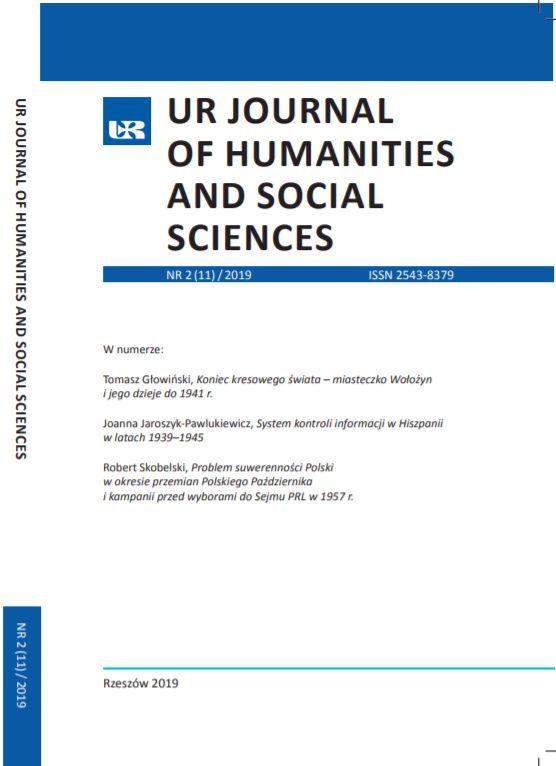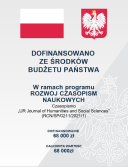The end of the Eastern Borderlands – the history of the town of Wołożyn to 1941
DOI:
https://doi.org/10.15584/johass.2019.2.2Keywords:
North-Eastern Confines, Nowogródczyzna, Wołożyn, Polish-Belarussian relations, Polish-Jewish relations, Soviet occupationAbstract
The Nowogródek Voivodeship, existing in the years 1921-1939, was not only one of the poorest in the Second Polish Republic, but also had experienced multiple social, national, and economic conflicts, primarily those difficult and violently breaking out at times: Polish-Belarussian and Polish-Jewish. The agricultural character of this mostly extremely backward region of Poland could have only been highlighted by its few under-developed cities and towns, such as Nowogródek, with less than ten thousand inhabitants, and the biggest center – Lida, inhabited by thirty-six thousand people. The new state borders, established after World War I, split the Nowogródek Voivodeship in an unnatural way, separating it especially from Mińszczyzna (Mińsk region), thus dividing families, traditional markets, and historically formed lands, only deepening the back-wardness and poverty in the region. It had been a place, like probably nowhere else in the interwar period, where time seemed to have stood still, conserving the forming over many centuries reality of Polish North-Eastern Confines.
The Soviet aggression against Poland, which started on the 17th September 1939, and the ensuing occupation, destroyed this borderland world: equally archaic, drowsy, and poor, but also colorful in its ethnicity and culture. This article presents that end, as preserved in the memories of the Polish inhabitants of the town of Wołożyn, a place located at the meeting point of Wileńszczyzna (Wilno region), Nowogródczyzna (Nowogródek regon), and Mińszczyzna. In order to provide a closer look into this little known Borderland town, the author also presented, as breifly as possible, its history.
Downloads
Downloads
Published
How to Cite
Issue
Section
License
Copyright (c) 2019 Wydawnictwo Uniwersytetu Rzeszowskiego

This work is licensed under a Creative Commons Attribution-NonCommercial 4.0 International License.



